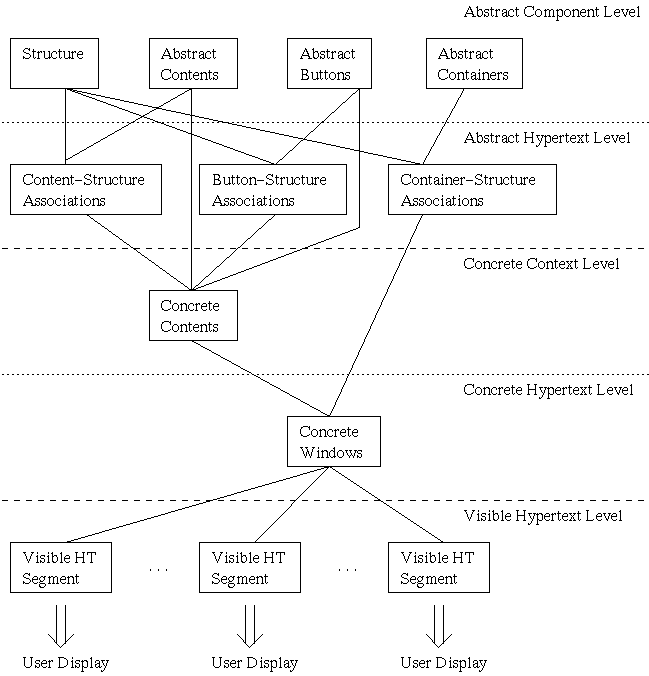
The Trellis model, a reference model by Stotts and FurutaTrellis model was developed by Richard Furuta and P. David Stotts. The model is called the Trellis System, which based on Petri Nets. From the Trellis model they deduced a meta-model, which they called the Trellis hypertext reference model, abbreviated as r-model. There are five logical levels in this reference model. Inside each of these levels, there are one or more representations of parts or all of the hypertext. In contrast to the other models, the levels represent levels of abstraction, not components of the system. These levels may be grouped into three categories:
This is the figure describing the levels for the Trellis reference model. You can click on the figure to go to the details of the levels.
Source: http://wwwis.win.tue.nl/2L670/ In the figure the lines indicate that a concept at a lower level is dependent on a concept at a higher level of abstraction. Components of the actual hypertext system need to be fitted into the trellis model (r-model) in order to apply this model as a reference model. The complication arises because of the different components can only be described at certain levels of the model. Stotts and Furuta have indicated how to model hypertext model structures, anchors, different flavors of links and dynamic content. |
| CS6212 - Special Topics in Media Lecturer: Prof George P. Landow |
Final Term Project By: Hendrik Christanto |
